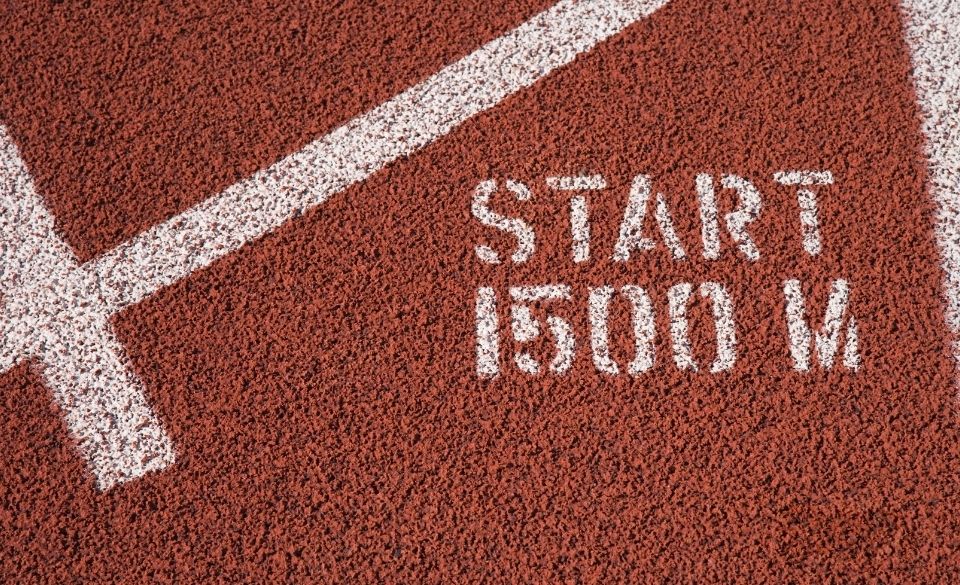
How Many Laps is 1500 Meters Running?
Page Contents
The 1500 meters race is the prominent middle distance running event in athletics at the present moment. Athletes have competed in this race since the beginning of the Olympics and they continue to do so.
Thanks to the oddness of the number, not just relative to the track division but also in its closeness, or lack of, to the mile equivalent, it is easy to get confused about how many laps the 1500 meters running entails.
We clear up all of this confusion, along with a few points about what makes the event so special in the sections below.
How Many Laps is 1500 Meters Running?
There are three and three-quarters laps in a 1500-meter track running event. What this means is that an athlete participating in a 1500-meter running event will have to run around a 400-meter track three full times, and then run another 3/4 of the track to complete a 1500 meters event.
As mentioned earlier, this may seem odd to a lot of people who may wonder, why not just run around the track 4 times to complete 4 full laps equating to a 1600-meter event? Doing this would surely be more straightforward and will avoid any form of confusion to both athletes and spectators, right?
Well, that makes sense in a way, but it just isn’t how it’s done. Why exactly is this so, you ask? We take a fuller look below.
The Peculiarities of 1500 Meters Running
Apart from the simplicity and directness of 1600-meter running equating to 4 full laps around the 400-meter track, it is also tempting to think that this would be more appealing seeing as it is basically the equivalent of a mile (which is equal to 1609 meters).
So why exactly did the athletics governing body decide to go with the more confusing 1500 meters running standard instead of the 1600-meter which is more direct and closer to a mile?
Well, the answer is a little less straightforward than you might think.
You see, the truth is there is no definitive reason why the international standard of the marquee middle distance running is 1500 meters instead of 1600 meters. Depending on who you ask, the theories are usually different and sometimes conflicting.
Some believe it is due to the easy roundness of 1500 meters into a nice 1.5k as opposed to 1600 meters into a less round 1.6k, while for most people it is due to the French 500-meter track standard back in the 1800s instead of the 400-meter track standard that we have today. This makes sense, of course, seeing as 1500 meters running around a 500-meter track will equate to a nice and complete 3 laps instead of 3 and 3/4 laps that we have today on our modern 400-meter tracks.
Ultimately, the disparity can be summed up as the effect of varying units of measurements between prominent nations at the time.
Deviations from the 1500 Meters Running Standard
Regardless of why the 1500 meters running is the standard today instead of the 1 mile or 1600 meters running, the reality at the present moment is that most major events favor the 1500 meters distance — although there are exceptions worth noting.
The most prominent of these can be found in American high schools where athletes more commonly partake in the one-mile race which is closer to 1600 meters.
And although there are a few advocates of the 1600 meters running in world athletics today, it doesn’t seem like the standard 1500 meters will change anytime soon.
Training for a 1500-Meter Race
1500m races are often seen as tactical races, as runners must pace themselves carefully to maintain their energy levels for the entire race. Many 1500m runners will try to stay near the front of the pack for the first few laps, before making their move towards the end of the race. That’s why it is important to build endurance for the duration of the event, and speed for the final.
For example, if you’re looking to improve your 1500m time, interval training is key. This type of training involves running at a fast pace for set intervals, with rests in between. 400m repeats are a great way to do this. Simply run 400m at your goal race pace, then recover for the same amount of time before repeating. Track intervals are another great option. Run 200m at your goal race pace, then recover for the same amount of time before repeating. Doing intervals like this will help you build the speed and endurance you need to run a fast 1500m.
Final Thoughts
Running a 1500-meter race involves running three and three-quarters laps around a 400-meter track. While some believe that things would be better running 1600 meters – which would be much closer to a mile and equivalent to 4 full laps – that just isn’t how things are on the international athletics stage.
So if you’re an athlete preparing for a 1500-meter race, have it in mind that you won’t actually be running a full 4 laps around the 400-meter track, but instead you’ll be doing 3 complete laps and three-quarters more.
Proper breath control, straight and solid posture, and accurate speed injections at the appropriate times are all paramount factors when it comes to excelling in this event.



